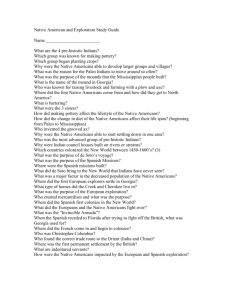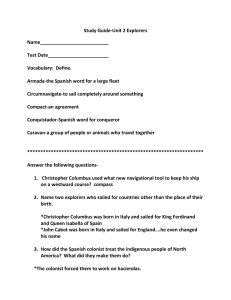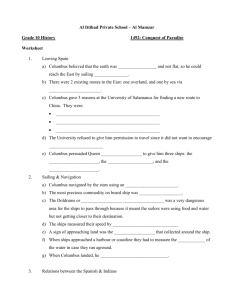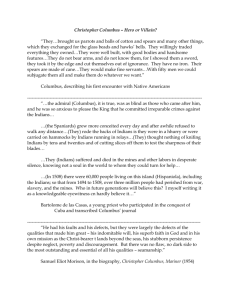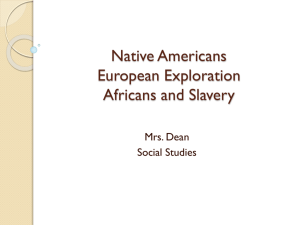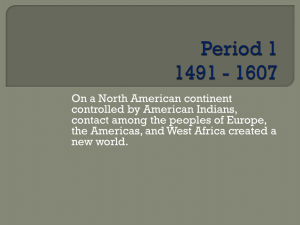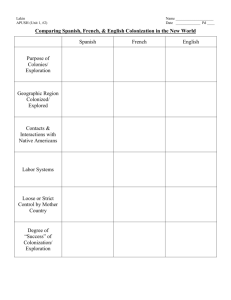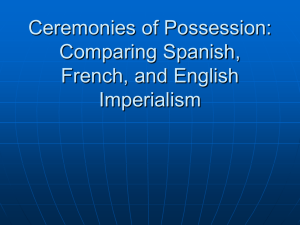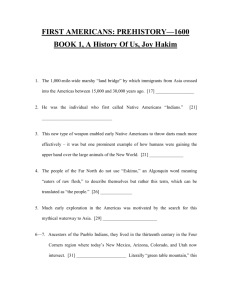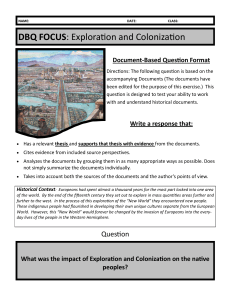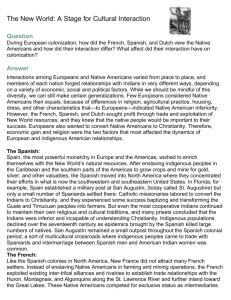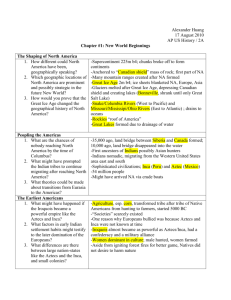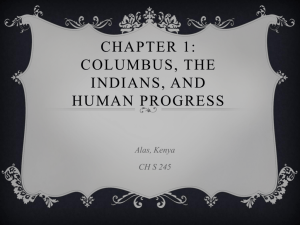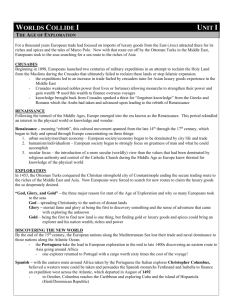Chapter 2 Key Points Columbus: The Columbian Exchange and
advertisement
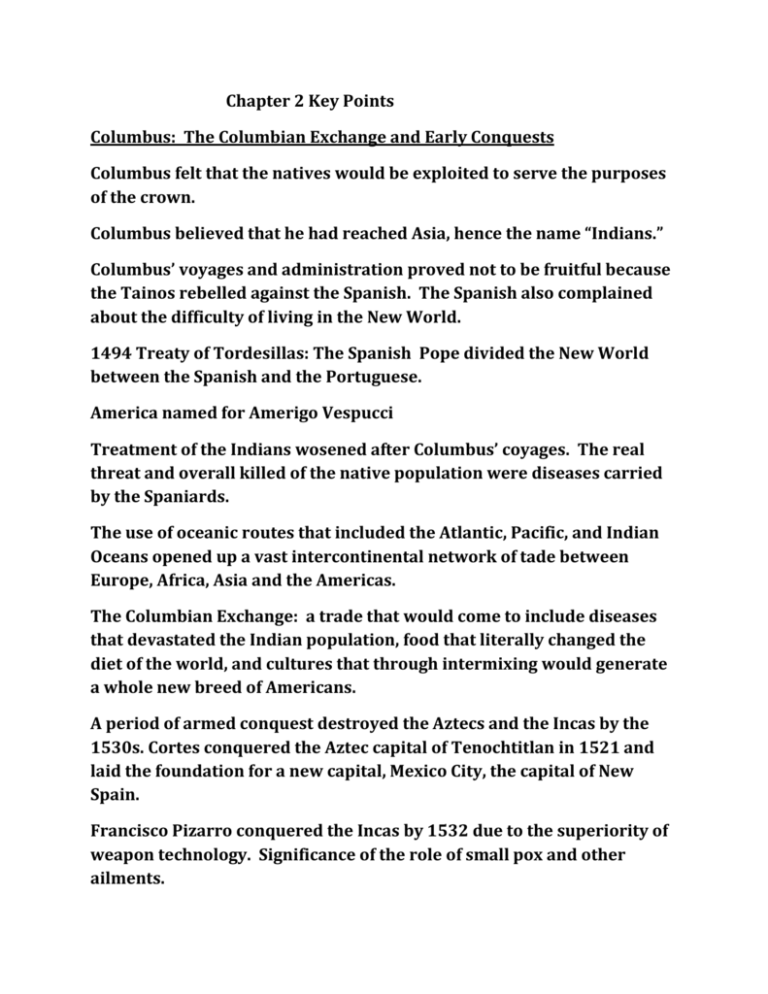
Chapter 2 Key Points Columbus: The Columbian Exchange and Early Conquests Columbus felt that the natives would be exploited to serve the purposes of the crown. Columbus believed that he had reached Asia, hence the name “Indians.” Columbus’ voyages and administration proved not to be fruitful because the Tainos rebelled against the Spanish. The Spanish also complained about the difficulty of living in the New World. 1494 Treaty of Tordesillas: The Spanish Pope divided the New World between the Spanish and the Portuguese. America named for Amerigo Vespucci Treatment of the Indians wosened after Columbus’ coyages. The real threat and overall killed of the native population were diseases carried by the Spaniards. The use of oceanic routes that included the Atlantic, Pacific, and Indian Oceans opened up a vast intercontinental network of tade between Europe, Africa, Asia and the Americas. The Columbian Exchange: a trade that would come to include diseases that devastated the Indian population, food that literally changed the diet of the world, and cultures that through intermixing would generate a whole new breed of Americans. A period of armed conquest destroyed the Aztecs and the Incas by the 1530s. Cortes conquered the Aztec capital of Tenochtitlan in 1521 and laid the foundation for a new capital, Mexico City, the capital of New Spain. Francisco Pizarro conquered the Incas by 1532 due to the superiority of weapon technology. Significance of the role of small pox and other ailments. The most famous criticisms of the Spanish treatment of the Indians came from Bartolome de Las Casas who wrote about this mistreatment. He fueled the criticism of Catholic Spain by introducing the concept of the “Black Legend.” A Divided Europe: The Impact of the Protestant Reformation 1517: Martin Luther posted his Ninety Five Theses resulting in the Protestant Reformation. Protestantism rose with the rise of nation-states. Significance of the Treaty of Westphalia: rulers of each nation-state would choose what religion that state would follow, creating a sense of religious unity within each nation-state. Exploration and Encounter in North America: The Spanish Ponce de Leon explored Florida and brought African slaves and Puerto Rican Indians with him. The Spanish had a desire for greater exploration and expectations of finding wealth. Francisco Coronado was met with hostility in the southwest and fled to parts of Texas, Oklahoma, and Kansas only to be disappointed in not finding any gold. Juan Cabrillo found California a desirable place for settlement and even discovered Monterey Bay, but he found no gold. Menendez de Aviles founded St. Augustine, Florida in 1565, which makes it the oldest European city in present-day United States. In general, Florida was left alone as a settlement until it was ceded to the U.S. in 1821. Don Juan de Onate claimed the area of New Mexico. The area was divided into districts led by priests, but bloodshed arose in 1598 between the Spanish and the Pueblo Indians. Exploration and Encounter in North America: The French In 1524, the French commissioned the Italian sailor, Giovanni de Verrazano to explore the Atlantic Coast and mapped out land between North Carolina and Newfoundland. Jacques Cartier explored the St. Lawrence River and established a longlasting trade between the French and the Indians. Exploration and Encounter in North America: The English In 1497 John Cabot explored the Newfoundland area. In 1588 the defeat of the Spanish Armada allowed England to dominate the Atlantic Ocean. Licenses pirates assisted the cause. (Sir Francis Drake) Sir Walter Raleigh attempted to establish a settlement in North Carolina called Roanoke in the 1580s. England’s first attempt at permanent settlement failed.
